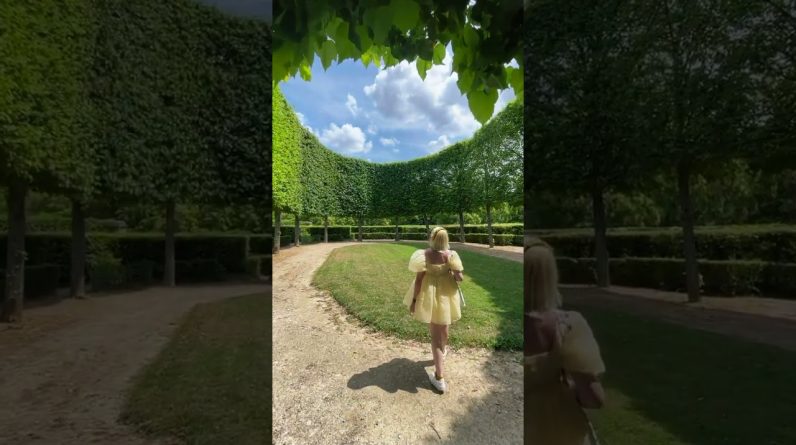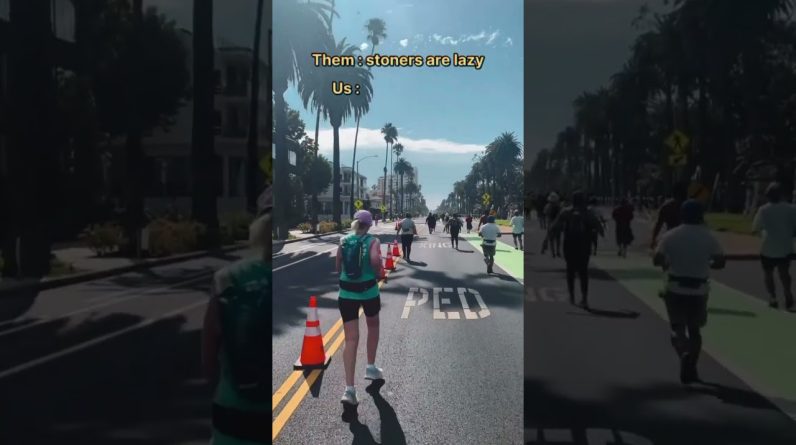At the same time as extra states legalized marijuana—and society began to return to regular following the worst of the coronavirus pandemic by lifting restrictions that saved many college students at house underneath parental supervision—teen hashish use remained secure in 2022, in accordance with the most recent federally funded Monitoring the Future (MTF) Survey.
Specialists like Nationwide Institute on Drug Abuse (NIDA) Director Nora Volkow had largely attributed an earlier substantial 2020 to 2021 drop in illicit substance use amongst youth to the truth that the pandemic minimized social interactions for a lot of younger folks. The expectation was that there’d be a resurgence amid renewed socialization—however that didn’t occur final 12 months in accordance with the brand new information.
As an alternative, past-year, past-30 day and day by day marijuana consumption amongst eighth, tenth and twelfth graders went largely unchanged in 2022.
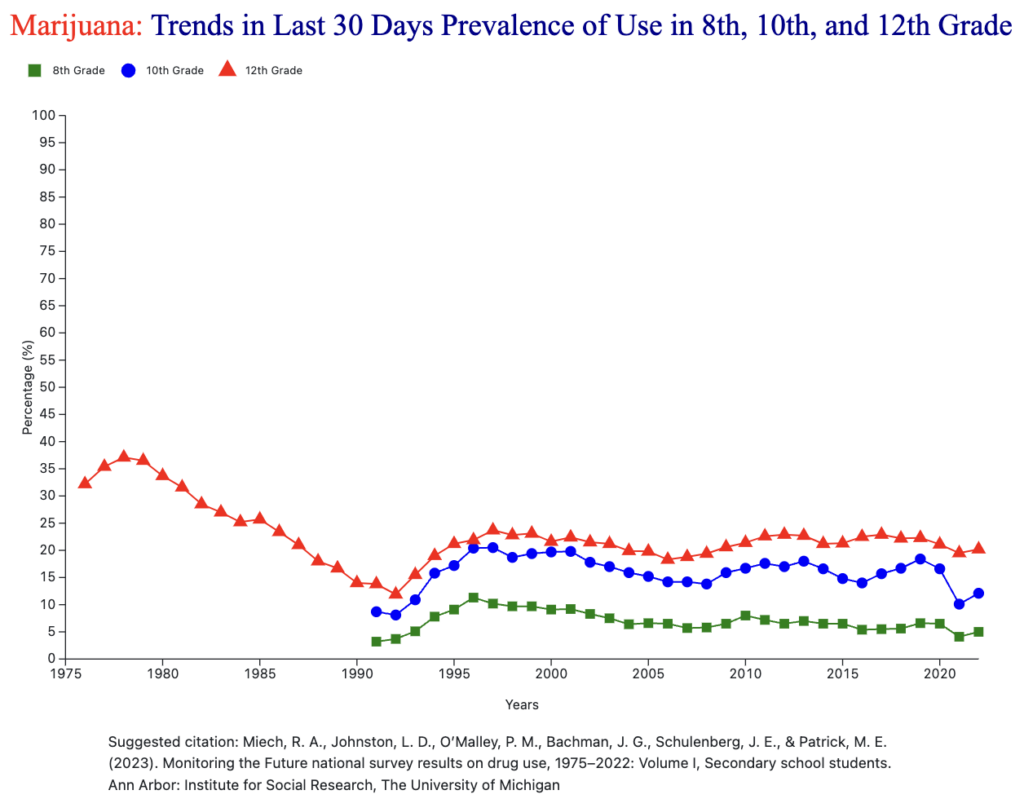
Through MTF.
About 5 p.c of these in eighth grade reported utilizing hashish within the past-month, which is simply barely larger than the 4.1 p.c reported the prior 12 months and nonetheless notably decrease than the 6.5 p.c degree in 2020. It’s additionally considerably decrease in comparison with the 11.3 p.c peak in 1996—nicely earlier than any adult-use markets had come on-line in states.
For tenth graders, past-month use was 12.1 p.c. Once more, that’s marginally larger than 2021 (10.1 p.c), however a lot decrease than 2020 (16.6 p.c) and a far cry from the 1997 peak of 20.5 p.c.
The identical primary development was noticed for twelfth graders, 20.2 p.c of whom reported past-month marijuana consumption in 2022. In 2021, that charge was 19.5, in comparison with 37.1 p.c in 1978.
“Hashish use remained secure for all three grades surveyed,” a NIDA official instructed Marijuana Second in an e-mail on Thursday.
The official added: “Of be aware, 6.0 p.c of eighth graders, 15.0 p.c of tenth graders, and 20.6 p.c of twelfth graders reported vaping hashish throughout the previous 12 months, reflecting a secure development on the pre-pandemic degree amongst eighth and twelfth graders, and a small enhance in reported use amongst tenth graders, although reported use amongst tenth graders in 2022 continues to be considerably under pre-pandemic ranges.”
The identical primary development line was noticed when teenagers have been requested about past-year marijuana use as a part of this newest MTF survey:
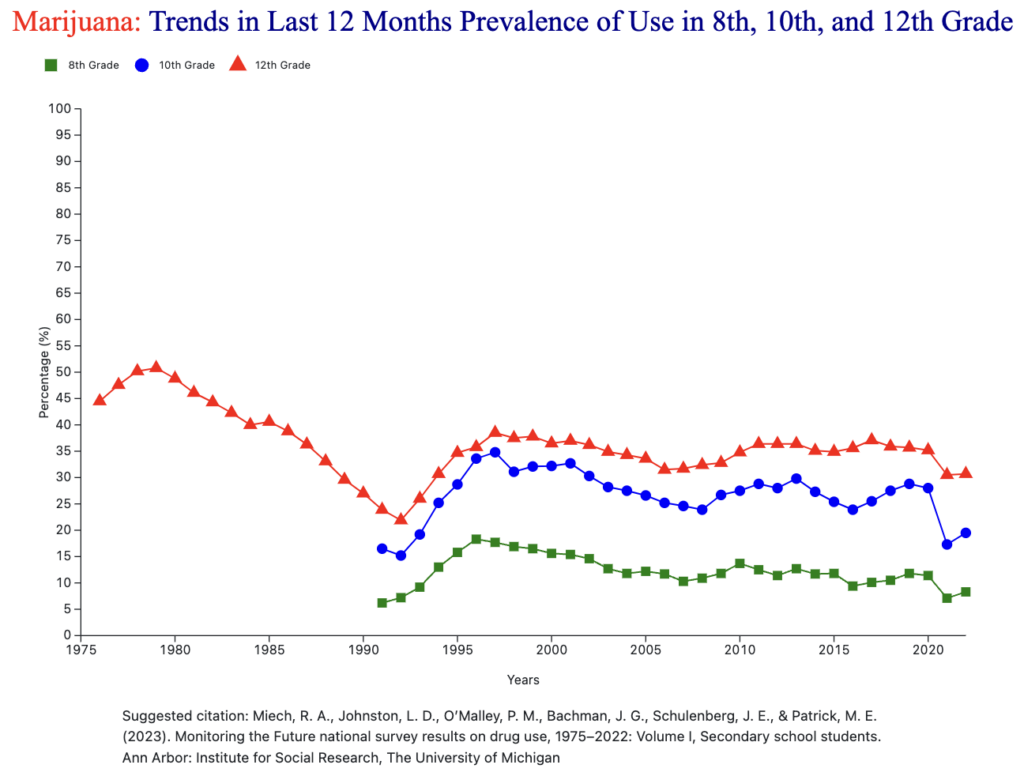
Through MTF.
In a press launch, NIDA’s Volkow stated that MTF, which was been analyzing youth substance use traits for practically 50 years, is “probably the greatest and most well timed instruments we now have to watch and perceive modifications in substance use amongst younger folks over time, together with by way of historic occasions such because the COVID-19 pandemic.”
“It’s encouraging that we didn’t observe a major enhance in substance use in 2022, whilst younger folks largely returned to in-person college, extracurricular actions, and different social engagements,” she stated.
Nicotine vaping, alcohol use and consumption of different illicit substances additionally usually “remained secure” throughout most age teams, MTF discovered. There have been some exceptions, nonetheless. For instance, alcohol use amongst twelfth graders “returned to pre-pandemic ranges,” as did consumption of opioids apart from heroin.
A slideshow that was offered at a NIDA briefing on the MTF findings did present that past-year hashish use have been barely larger—and disapproval of marijuana consumption was considerably decrease—amongst college students residing in states the place medical hashish was authorized—a degree that Sensible Approaches to Marijuana (SAM) President Kevin Sabet highlighted.
On todays @NIDAnews briefing—
eighth, tenth and twelfth graders residing in medical marijuana states:
Previous 12 months use, availability is

Disapproval and threat perception is
“Authorized states” doubtless even worse.
When will we be taught? pic.twitter.com/87RFtu5s4o
— Kevin Sabet (@KevinSabet) December 15, 2022
It’s not clear what standards NIDA used to categorise states as both having medical hashish or not, as some counts embrace these with extra restrictive applications whereas others don’t.
In the meantime, past-month marijuana vaping amongst twelfth graders ticked up at a statistically important degree from 2021 to 2022, one other slide exhibits.
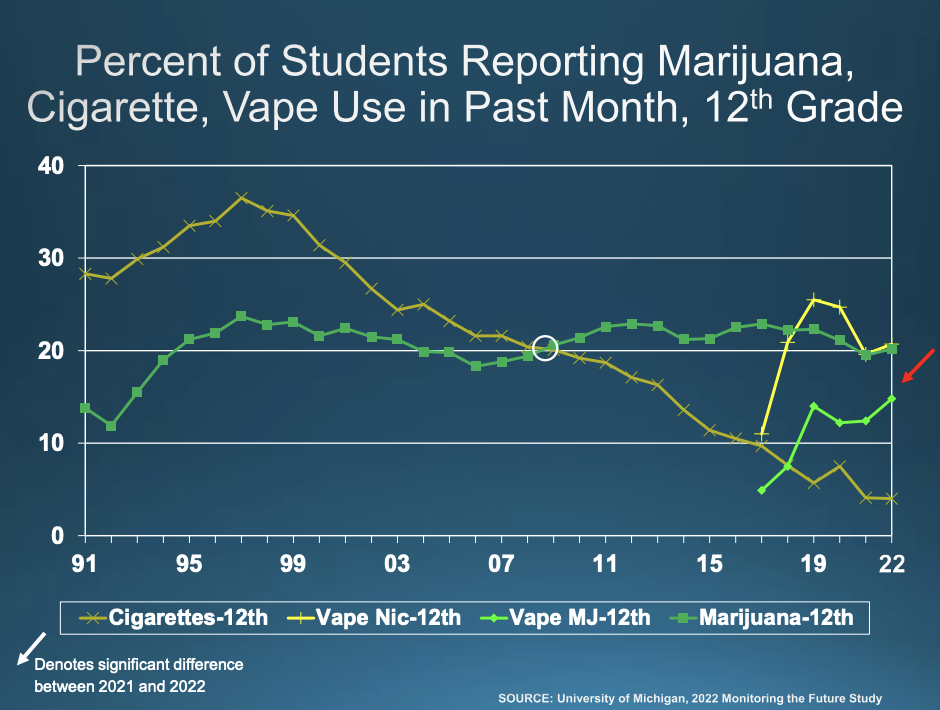
Through NIDA/MTF.
However the general consistency bucks the more and more debunked argument from prohibitionists that legalization would result in a surge in underage use.
The College of Michigan’s Institute for Social Analysis, which conducts the annual survey for NIDA, centered on teen vaping traits in its press launch, omitting point out of marijuana in contrast to in previous summaries.
However whereas it is perhaps considerably stunning that younger marijuana use didn’t enhance after pandemic restrictions have been lifted as some anticipated, the overall discovering that teen consumption is secure is in line with a rising physique of scientific literature on the subject.
Simply final month, for instance, one other NIDA-funded examine that was revealed within the American Journal of Preventive Medication discovered that state-level hashish legalization will not be related to elevated youth use.
The examine demonstrated that “youth who spent extra of their adolescence underneath legalization have been no kind of more likely to have used hashish at age 15 years than adolescents who spent little or no time underneath legalization.”
One more federally funded examine from Michigan State College researchers that was revealed within the journal PLOS One this summer time discovered that “hashish retail gross sales is perhaps adopted by the elevated prevalence of hashish onsets for older adults” in authorized states, “however not for underage individuals who can’t purchase hashish merchandise in a retail outlet.”
In the meantime, adolescent marijuana use in Colorado declined considerably in 2021, in accordance with the most recent model of a biennial state survey launched in June.
Advocates have lengthy argued that offering regulated entry to marijuana at shops the place there are necessities to verify ID, for instance, would mitigate the danger of adolescent consumption.
A latest examine out of California discovered that “there was one hundred pc compliance with the ID coverage to maintain underage patrons from buying marijuana immediately from licensed retailers.”
The Coalition for Hashish Coverage, Training, and Regulation (CPEAR), an alcohol and tobacco industry-backed marijuana coverage group, additionally launched a report this 12 months analyzing information on youth marijuana use charges amid the state-level legalization motion.
One other federally funded examine, the Nationwide Survey on Drug Use and Well being (NSDUH), was launched in October exhibiting that youth marijuana use dropped in 2020 amid the coronavirus pandemic and as extra states moved to enact legalization.
Additional, an evaluation revealed by the Journal of the American Medical Affiliation final 12 months discovered that enacting legalization has an general impression on adolescent hashish consumption that’s “statistically indistinguishable from zero.”
The U.S. Division of Training’s Nationwide Middle for Training Statistics additionally analyzed youth surveys of highschool college students from 2009 to 2019 and concluded that there’s been “no measurable distinction” within the share of these in grades 9-12 who reported consuming hashish not less than as soon as prior to now 30 days.
In a separate, earlier evaluation, the Facilities for Illness Management and Prevention discovered that marijuana consumption amongst highschool college students declined throughout the peak years of state-legal leisure hashish legalization.
There was “no change” within the charge of present hashish use amongst highschool college students from 2009-2019, the survey discovered. When analyzed utilizing a quadratic change mannequin, nonetheless, lifetime marijuana consumption decreased throughout that interval.
One other examine launched by Colorado officers in 2020 confirmed that youth hashish consumption within the state “has not considerably modified since legalization” in 2012, although strategies of consumption are diversifying.
An official with the White Home Workplace of Nationwide Drug Management Coverage’s Nationwide Marijuana Initiative went even additional in 2020, admitting that, for causes which might be unclear, youth consumption of hashish “goes down” in Colorado and different legalized states and that it’s “a very good factor” even when “we don’t perceive why.”
Kansas Lawmakers Maintain Remaining Medical Marijuana Assembly After Touring Develop Facility, With Chairman Previewing 2023 Invoice Plans
The publish Teen Marijuana Use Remained Steady In 2022, Regardless of Extra States Legalizing And Lifting Of Pandemic Restrictions appeared first on Marijuana Second.

